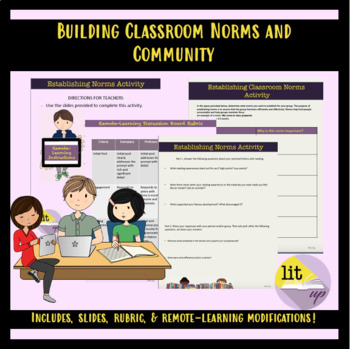It’s long past time we stop with the incessant rules in the classroom.

The day before my first day of teaching a veteran teacher reminded me to have my rules set and ready to go. “You can always loosen up, but you can never tighten up,” she said, wagging her finger.
While I do, mostly, agree with the idea of being a bit of a hardass at the start of the term, I do not subscribe to the adage that “You shouldn’t smile until October.” This old-school idea of being tough as nails or whatever other clichés, never really worked in my classroom. I do have a reputation for not putting up with the bullshit that teenagers try to pull, most of my students know, I’m really a softy.
Knowing I’m a softy means that having a 50-page syllabus with a million rules doesn’t serve anyone. Not to mention, it’s a waste of paper.
I’m not saying I don’t have very specific expectations, because I absolutely do. What I don’t have is one of those posters with a long list of rules like, “Raise your hand to speak,” or “Keep your hands, feet, and objects to yourself.”
Maybe I’m naïve, but by the time my students reach me in high school, those rules should be internalized. Instead of spending the first day going over a lengthy syllabus, students establish their own set of norms.
Before I go on, let me clarify one thing: rules and norms are different. I don’t have rules, but I do have policies. For instance, I have a no grooming policy and a no tuna fish with onions sub policy in my classroom. There is a clear procedure for using the hall pass and turning in late work. What I’m talking about here is establishing norms to build a nurturing classroom environment and community.
Since I teach English, the focus of those norms are based on how students want to see their classroom run with regard to reading, writing, and discussions. What do they expect of their peers and me when we are having heated conversations about controversial texts?
Having the students establish norms on day one is a great way to show them that they are accountable for their learning.
The Activity
First, I ask that students write down the answers to some questions their reading and writing history. Students who aren’t reading or writing at grade level often have negative reading and writing histories. Students tap into memories that have been both positive and negative and write them out.
After they’ve reflected on the past, they share with their peers and then eventually out to the class. It’s your classic “Think, Pair, Share” structure.
As a class, we make a list of what supports their reading and writing and what are barriers to their learning. From there, students silently make a list of norms. They share those norms with their groups, then as a class, we whittle these norms down.
The discussion is lively. Students share lovely stories about positive reading and writing experiences, but there are horror show stories, too. The conversation helps guide the students to make norms like, “Don’t dominate the discussion” or “Come to class prepared.”
The last thing we do on the first day is have students set small group norms. I like to create new groups every 2-3 weeks. I don’t know why, but I really love writing seating charts. It helps the students get to know each other and forces them to collaborate with different students throughout the semester. The students choose roles like taking attendance, making sure cell phones are parked, and collecting and passing back graded work. My goal with these roles and norms is to make sure that the classroom can run itself. It takes about two weeks, but with consistency, I’m able to get a smoothly run ship.
I use giant Post-Its to create norm posters for each class and have them up by the next day. When I remember, I ask a student who loves to draw or who has nice penmanship to write it up.
Like activity idea but don’t have time to get the materials ready? No problem. Here’s everything you need to stop making classroom rules and start building classroom community. NOTE: There’s even an option to use it in a virtual classroom.
Results
I’ve been using this strategy for about 7 years, and I love it. I don’t have to worry about putting up lame, elementary school-style posters up with rules like, “Raise your hand” and “Stay seated.” This activity starts the semester with the expectation that students are adults. The result: they mostly act more like adults.
Does this put an end to all classroom management issues?
Of course not. What it does, however, is allow the students to hold each other accountable for their learning. When group members don’t come prepared, they remind each other of the contracts they’ve made. When students dominate during the discussion, I point them to the norms they established.
In the end, those rules about raising hands and staying seated get broken, but the students own their learning because it’s their classroom, and I’m mostly there to facilitate their learning.
Did you know I have a newsletter? It comes into your inbox once a week. Sign up here!
Not ready to go back to school and still looking for a summer read? Check out my novel, With All My Love, I Wait.